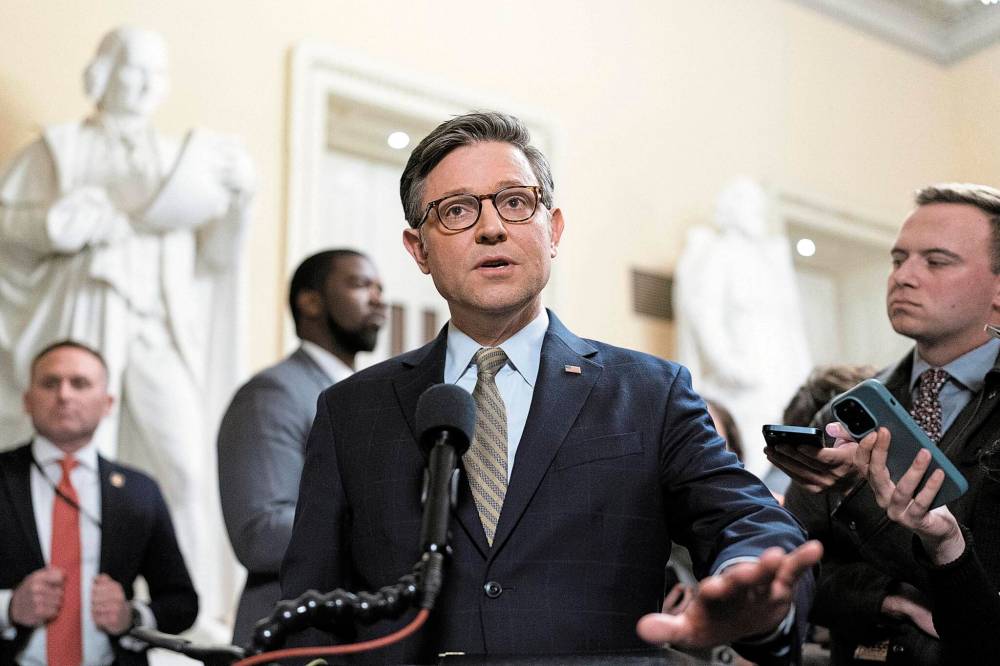Shutdown stalls many U.S. government functions
Advertisement
Read this article for free:
or
Already have an account? Log in here »
To continue reading, please subscribe:
Monthly Digital Subscription
$0 for the first 4 weeks*
- Enjoy unlimited reading on winnipegfreepress.com
- Read the E-Edition, our digital replica newspaper
- Access News Break, our award-winning app
- Play interactive puzzles
*No charge for 4 weeks then price increases to the regular rate of $19.00 plus GST every four weeks. Offer available to new and qualified returning subscribers only. Cancel any time.
Monthly Digital Subscription
$4.75/week*
- Enjoy unlimited reading on winnipegfreepress.com
- Read the E-Edition, our digital replica newspaper
- Access News Break, our award-winning app
- Play interactive puzzles
*Billed as $19 plus GST every four weeks. Cancel any time.
To continue reading, please subscribe:
Add Free Press access to your Brandon Sun subscription for only an additional
$1 for the first 4 weeks*
*Your next subscription payment will increase by $1.00 and you will be charged $16.99 plus GST for four weeks. After four weeks, your payment will increase to $23.99 plus GST every four weeks.
Read unlimited articles for free today:
or
Already have an account? Log in here »
While the threat of an interruption of government services is a fairly common occurrence in U.S. politics — these days, it seems to be part of every federal budget cycle — actual full-scale shutdowns are quite rare.
Despite the seemingly unbridgeable chasm that exists between America’s two political parties in these deeply polarized times, Republicans and Democrats usually find a way to cobble together a deal to raise the government’s debt ceiling in a way that allows services to continue.
This time, however, no agreement could be found. The U.S. government went into shutdown on Oct. 1, bringing many government services to a halt. Those considered essential, such as border and law enforcement, federally funded hospitals and air-traffic control, have continued, though many of the workers delivering those services are not being paid during the budget interruption.

Jose Luis Magana / The Associated Press files
U.S. Speaker of the House Mike Johnson
Such situations are not commonplace, despite the current ideological divide. The government has shut down 15 times since 1980, but in 11 of those instances, the interruption lasted three or fewer days. The last shutdown occurred in December 2018, and lasted 35 days.
What makes this shutdown even more unusual than others is that rather than working feverishly to reach a solution that will restore government services, many Republicans — led by President Donald Trump — are instead embracing the shutdown as an opportunity to further reduce the civil service workforce and target cuts in a way that punishes constituencies represented by Trump-opposing Democrats.
In other words, this shutdown is more than a fiscal and ideological impasse; it’s a weapon of partisan vengeance in the current president’s ongoing campaign to centralize authoritarian power and dismantle democratic norms.
Trump said as much at the shutdown’s onset, posting on social media that he had met with budget-office manager (and Project 2025 architect) Russell Vought “to determine which of the many Democrat Agencies, most of which are a political SCAM he recommends to be cut, and whether or not those cuts will be temporary or permanent. I can’t believe the Radical Left Democrats gave me this unprecedented opportunity.”
Not surprisingly, Trump and congressional Republicans have been quick to blame Democrats for the shutdown — despite the fact the GOP controls both the House of Representatives and the Senate. The margin is sufficiently thin in the upper chamber that at least some Democrat support is required to reach the 60-vote threshold for passage of a budget bill, and Democrats are demanding that any such bill must include concessions on numerous health-care-related supports and tax credits.
Earlier this week, Trump indicated he might be willing to negotiate on health-care subsidies in order to reach an agreement.
Of course, in the never-ending drama that is the Trump presidency, there are subplots.
One of the most intriguing is that many Republican lawmakers are not even in Washington to participate in the ongoing budget discussion, having been sent home by House Speaker Mike Johnson.
Speculation is that their absence is unrelated to budget matters and is instead intended to prevent Johnson from having to swear in newly elected Arizona Democratic Rep.-elect Adelita Grijalva, who represents the necessary 218th signature on a bipartisan petition that would compel a full-chamber vote on releasing files relating to the federal government’s investigation into Jeffrey Epstein.
How long the shutdown can continue remains an open question. But in recent polling, more Americans blamed the Republicans (39 per cent) than the Democrats (30 per cent) for the dispute.
With U.S. midterm elections a little more than a year away, perhaps it’s avoiding ballot-box retribution rather than abetting Trump’s petty-vengeance campaign that should be GOP office-holders’ primary concern.
History
Updated on Thursday, October 9, 2025 7:09 AM CDT: Adds photo


